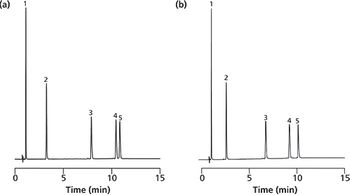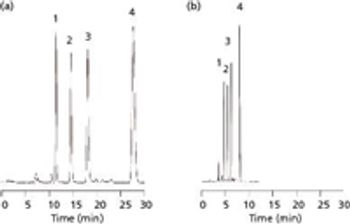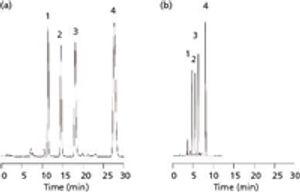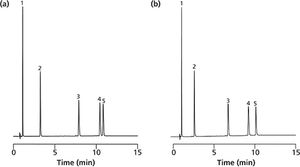
In this article, the application of silica monoliths with bimodal pore structure (macro and mesopores) is described for the chromatographic analysis of biomolecules including peptides, proteins, and antibodies.
Merk KGaA, Darmstadt, Germany

In this article, the application of silica monoliths with bimodal pore structure (macro and mesopores) is described for the chromatographic analysis of biomolecules including peptides, proteins, and antibodies.

Monolithic columns feature both high column efficiency and high column permeability. This article discusses their preparation, applications, and future prospects.

Using a novel new-design monolithic silica column (Chromolith? HighResolution RP-18e), fast, high resolution separations were achieved for various drug mixtures without the high pressures characteristic of modern particulate technology.

In this article, silica-based monolithic columns are compared and contrasted to packed microparticulate columns. Some of the challenges developing commercial silica rods and encapsulated monolith columns are described, including the development of a 2-mm i.d. column. A study of wall effects in these monolith columns was performed. Future trends and challenges in improving the performance of silica-based monolith columns are described.

The guest authors discuss the use of monolithic silica columns in high-throughput HPLC, including developments and applications in combinatorial chemistry. They also explain performance characteristics for these columns and provide caveats about their effective usage.

Published: December 1st 2001 | Updated:

Published: February 1st 2012 | Updated:

Published: April 1st 2012 | Updated:

Published: April 1st 2008 | Updated:

Published: December 15th 2014 | Updated: